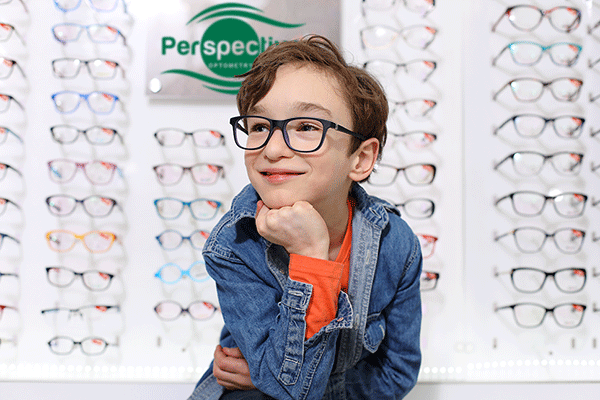The rising global prevalence of myopia (nearsightedness) has spurred significant research into effective control strategies, particularly for children. Among the most impactful innovations are spectacle lenses utilizing Defocus Incorporated Multiple Segments (D.I.M.S.) Technology, notably brought to market as HOYA MiYOSMART lenses. These lenses represent a paradigm shift, moving beyond simple vision correction to actively manage myopia progression.
The Genesis of D.I.M.S. Technology: The Hong Kong Polytechnic University Study
The foundational research for D.I.M.S. Technology originated from the Centre for Myopia Research at The Hong Kong Polytechnic University. This esteemed institution, particularly led by Professor Carly Lam and Professor H. W. Lee, has been at the forefront of myopia research.
The Initial D.I.M.S. Study:
-
When & Where: The first significant clinical trial began in 2014 in Hong Kong.
-
Who & What Institutions: The study was conducted by researchers from The Hong Kong Polytechnic University, in collaboration with HOYA Vision Care.
-
Study Design: It was a prospective, randomized, double-blind clinical trial. This robust design ensured high scientific rigor, with neither the participants nor the researchers knowing who received the D.I.M.S. lenses versus standard single-vision lenses.
-
Number of Subjects: The trial involved 160 myopic children aged 8-13 years.
-
Completion: The primary phase of the study was completed over two years, with the initial results published in 2019. This was followed by an extended three-year follow-up study, with results published in 2021, and an impressive six-year follow-up study published in 2022.
How D.I.M.S. Technology Works
The D.I.M.S. lens design is ingeniously simple yet profoundly effective:
-
Central Clear Zone: The center of the lens provides clear vision, fully correcting the child's distance prescription.
-
Treatment Zone: Surrounding this central zone is a honeycomb-like pattern of hundreds of small lens segments. These segments incorporate a myopic defocus effect, meaning they cause light to focus slightly in front of the retina in the peripheral vision.
The "Myopic Defocus" Principle: Research suggests that when peripheral light focuses behind the retina (as with traditional single-vision lenses in myopes), it signals the eye to grow longer, thereby exacerbating myopia. By creating myopic defocus in the periphery, D.I.M.S. lenses are believed to send a signal to the eye to slow down its axial elongation (the lengthening of the eyeball), which is the primary cause of myopia progression.
Key Results of the D.I.M.S. Studies
The results of the D.I.M.S. studies have been highly significant:
-
Two-Year Results (Published 2019): The initial two-year trial demonstrated that children wearing D.I.M.S. lenses had a 60% reduction in myopia progression and a 21% reduction in axial elongation compared to those wearing conventional single-vision lenses. Link to study: Lam, C. S. Y., Tang, W. C., Tse, D. Y. Y., Lee, R. P. K., Chun, R. K. M., Hasegawa, S., ... & To, C. H. (2019). Defocus Incorporated Multiple Segments (DIMS) spectacle lenses slow myopia progression: a 2-year randomized clinical trial. British Journal of Ophthalmology, 104(3), 363-368.
-
Three-Year Follow-up (Published 2021): The extended study confirmed the sustained efficacy of D.I.M.S. lenses over three years, with children continuing to show a significant reduction in myopia progression. Importantly, it also showed no rebound effect—meaning myopia did not rapidly worsen when children ceased wearing the lenses, a concern with some other treatments. Link to study: Lam, C. S. Y., Tang, W. C., Tse, D. Y. Y., Lee, R. P. K., Chun, R. K. M., Hasegawa, S., ... & To, C. H. (2021). Defocus Incorporated Multiple Segments (DIMS) spectacle lenses: a 3-year follow-up study. British Journal of Ophthalmology, 105(7), 988-993.
-
Six-Year Follow-up (Published 2022): This landmark study further reinforced the long-term effectiveness and safety of MiYOSMART lenses. It showed that the myopia control effect was sustained over six years, confirming the treatment's reliability and providing crucial data on long-term safety. Link to study: Lam, C. S. Y., Tang, W. C., Tse, D. Y. Y., Lee, R. P. K., Chun, R. K. M., Hasegawa, S., ... & To, C. H. (2022). Myopia control effect of DIMS spectacle lens in Chinese children: results of a 6-year follow-up study. British Journal of Ophthalmology.
What the D.I.M.S. Study Results Mean for Patients
These extensive and rigorously conducted studies mean that HOYA MiYOSMART lenses, incorporating D.I.M.S. Technology, are a highly reliable and evidence-based solution for myopia control in children. For parents and children, this offers:
-
A Non-Invasive Option: It's a simple, familiar spectacle lens worn daily, making it easy for children to adapt.
-
Proven Efficacy: The significant reduction in myopia progression directly translates to a lower likelihood of developing high myopia.
-
Reduced Future Health Risks: By controlling axial elongation, MiYOSMART helps reduce the long-term risks associated with high myopia, such as retinal detachment, glaucoma, and myopic maculopathy.
-
Sustained Effect & Safety: The long-term follow-up data provides confidence in the lasting benefits and safety profile of the lenses.
HOYA MiYOSMART Glasses: A Clear Choice for Myopia Control
HOYA MiYOSMART glasses are the direct commercialization of the groundbreaking D.I.M.S. Technology developed by The Hong Kong Polytechnic University. These lenses are designed specifically for children with myopia, offering them clear vision while actively working to slow the progression of their nearsightedness.
What They Do and How They Help:
-
Correct Distance Vision: Like regular glasses, MiYOSMART lenses provide sharp, clear vision for daily activities.
-
Control Myopia Progression: Simultaneously, the D.I.M.S. segments in the peripheral field of view deliver a controlled amount of myopic defocus. This specific optical signal is what guides the eye to slow its growth, preventing it from becoming excessively long.
-
Simple Integration: For many children, wearing glasses is already a part of their routine. MiYOSMART offers a "set it and forget it" solution—they wear their glasses as usual, and the lenses do the work of myopia control passively.
-
Proven by Extensive Studies: As detailed above, the efficacy of the underlying D.I.M.S. Technology has been robustly demonstrated through multiple clinical trials by The Hong Kong Polytechnic University, with follow-up data extending up to six years. These studies confirm an average 60% reduction in myopia progression and a significant slowing of axial elongation.
For parents seeking an effective, non-invasive, and well-researched method to manage their child's myopia, HOYA MiYOSMART glasses offer a compelling solution that combines vision correction with proactive eye health management.



0 comments